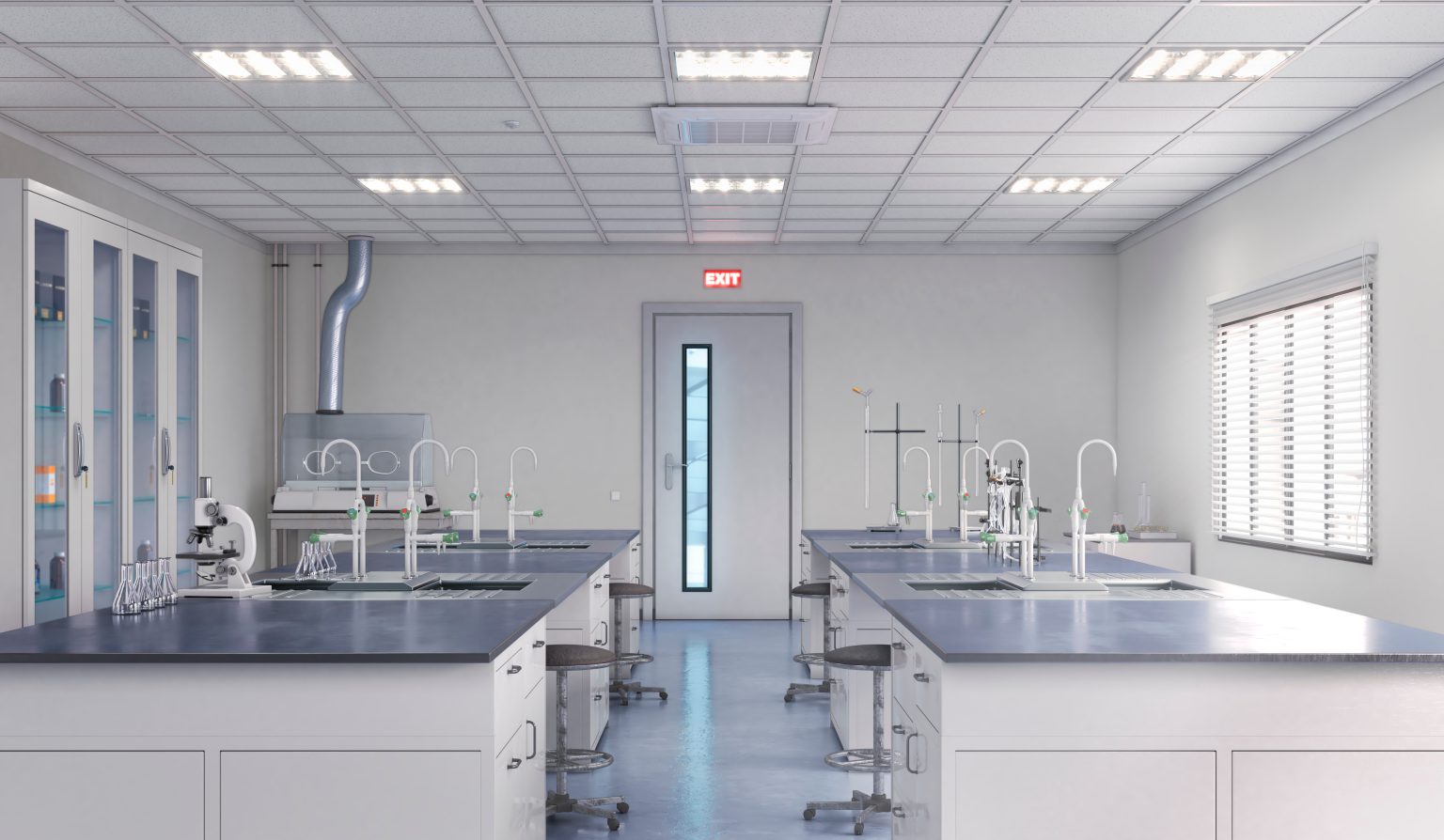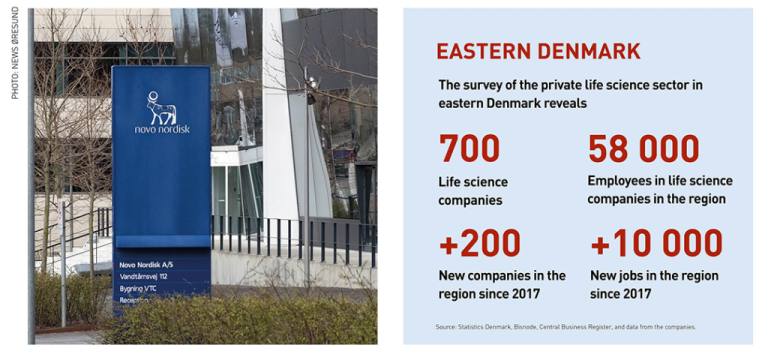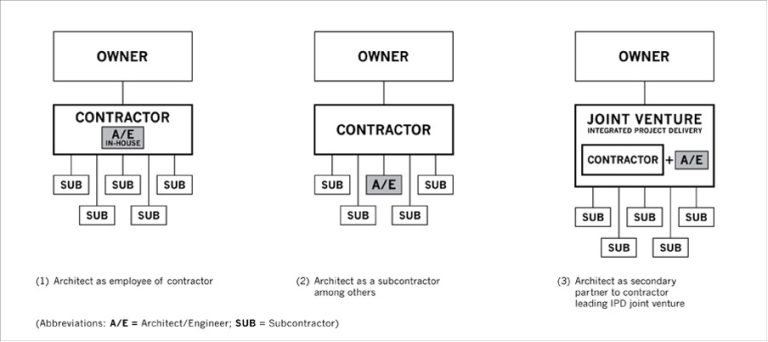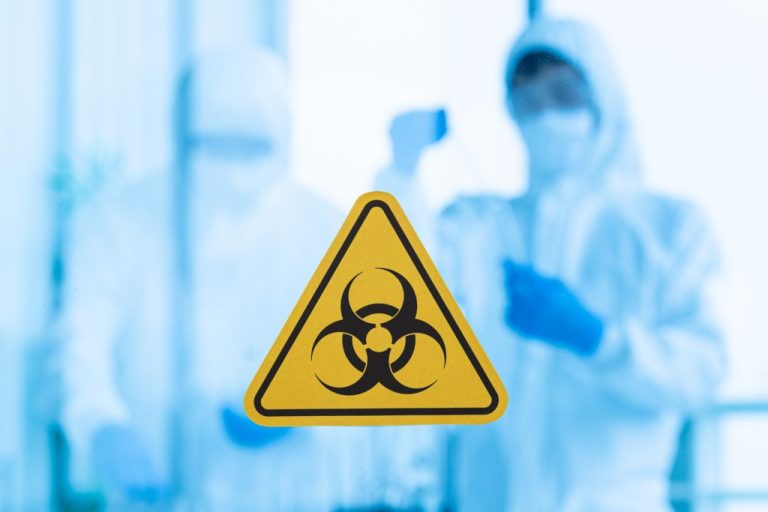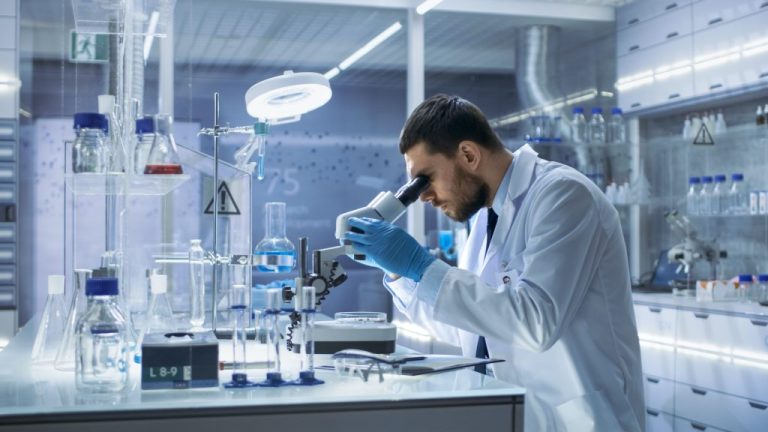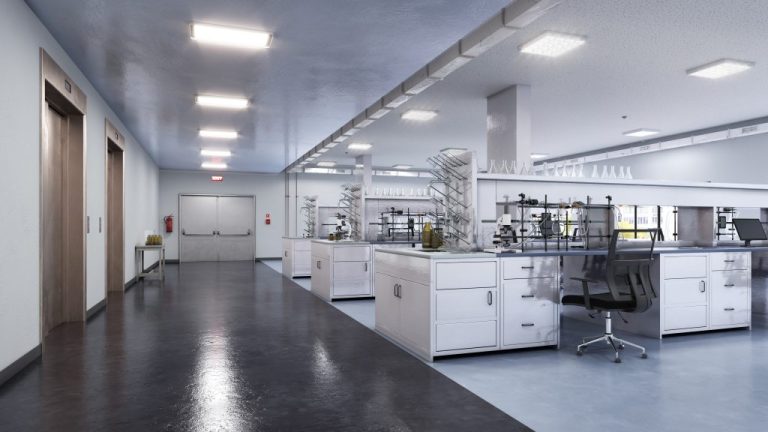What is the difference between Wet and Dry Laboratories?
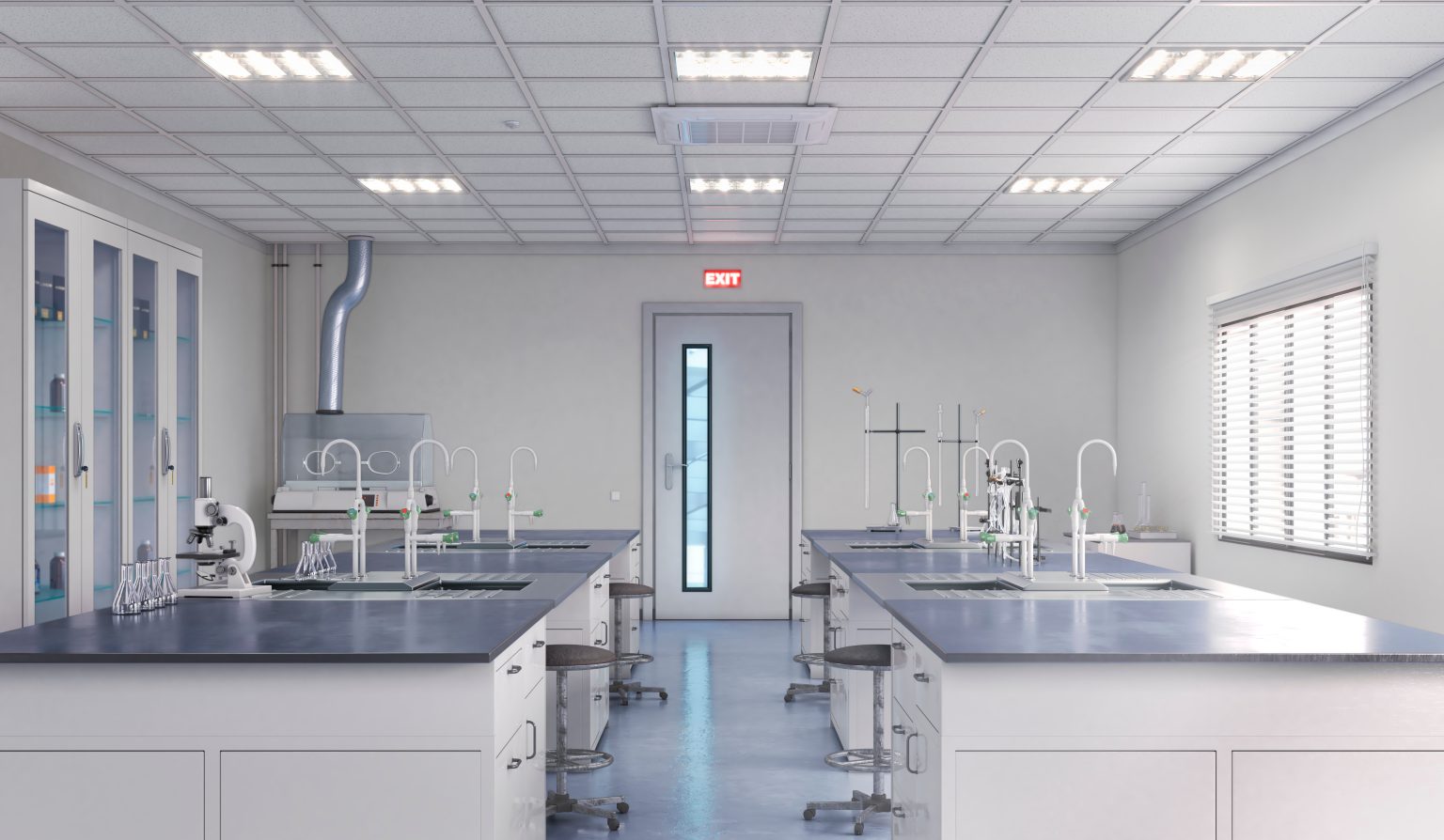
As technology has evolved wet and dry laboratories have become increasingly interconnected, but the two types of labs still have fundamentally different purposes and design considerations.
Here at Copenspace, we love to share our knowledge about lab design, and in this article, we explain the differences between wet and dry labs and how to design a flexible lab.
What is a wet lab?
You might remember the labs from your chemistry lessons in your school days. Bunsen burners, sinks and a wide range of appliances to perform chemical experiments. A wet laboratory looks like the typical lab from your school years.
Experiments in wet labs can vary a lot, but generally wet labs are designed to handle materials such as:
- Fluids
- Medicines
- Chemicals
- Enzymes
- Biological materials
The lab should be able to handle these materials in a safe and correct way. Therefore, we need to consider both disposal, storage, and protection of the materials and lab samples.
Moreover, there are several safety considerations when designing a wet lab, due to the chemicals and other potentially dangerous fluids.
Designing a wet lab
It can be complicated designing wet laboratories because the experiments performed not only decide what equipment goes in the lab but also the building design itself such as plumbing, ventilation and other structural systems.
When building wet labs, we typically need to increase and improve piping and ventilation in existing buildings, to ensure the correct disposal of all the wet materials. Furthermore, we ensure access to fresh air, plan for a comprehensive ventilation system and maintenance of humidity levels.
A wet lab often requires more equipment than a dry lab such as cooling systems, fume cabinets, storage systems for lab samples, sinks, ventilation, and much more. Additionally, there can be several safety measures to consider when designing wet labs.
Depending on the character of the experiments this equiment should typically be considered:
- Drain, ventilation, and waste systems
- Fume hoods
- Lab countertops and sinks that are easy cleaned easily
- Biosafety cabinets
- Materials that are resistant to bacteria and chemicals
- Refrigerators and freezers
- Hot and cold water, including deionized water and reverse osmosis water
- Sterilization equipment
- Safety showers, eye and hand wash stations
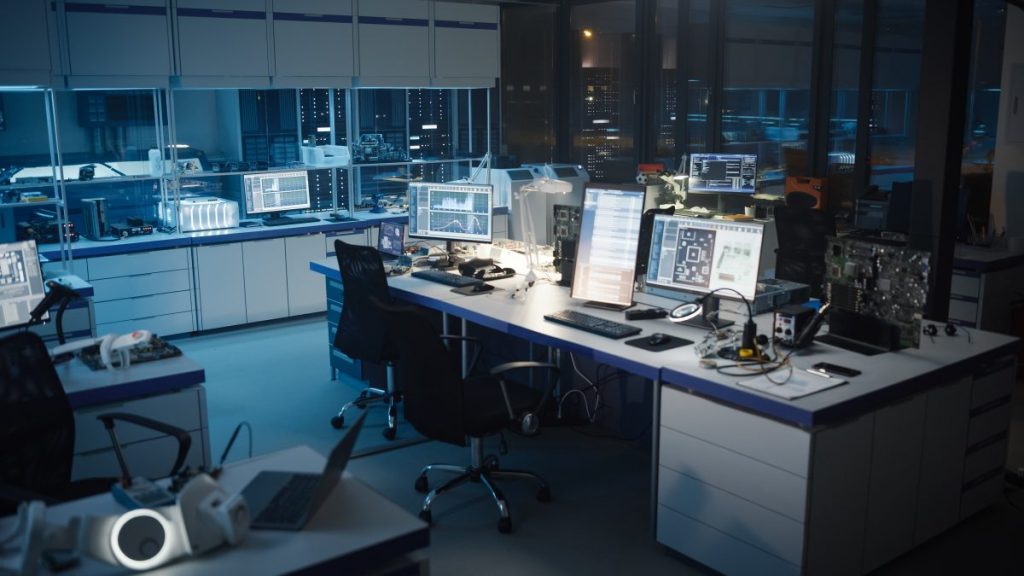
What is a dry lab?
How can we incorporate flexibility in the lab?
Snarere arbejder man med data og beregninger, som er umulige at teste i våde laboratorier, fordi forsøgene ofte foregår på teoretisk plan. Tørre laboratorier bruges til at behandle data inden for eksempelvis akademisk forskning, informationsteknologi og ingeniørvidenskab.
Er tørre laboratorier så bare veludstyrede computerrum? Ja, på en måde, men derfor skal man ikke undervurdere resultaterne. Forskningen i tørre laboratorier hjælper nemlig videnskabsfolk til at forudse fænomener med høj nøjagtighed, og udstyret er uhyre komplekst hvilket stiller en række krav til designet af laboratoriet.
Designovervejelser ved tørre laboratorier
Med tørre laboratorier er der en række designmæssige overvejelser, da der typisk vil være samlet mange højteknologiske computere, 3D-printere, lasere og andre komplekse og elektroniske maskiner. Disse maskiner stiller krav til alt fra lyd og vibration til elektrostatisk udladning.
De mange maskiner og varmen herfra øger risikoen for statisk udladning. Derfor bør man overveje, hvilke materialer laboratoriet er indrettet med. Her vælger man typisk overfladematerialer, som er mindre statiske, så man undgår at få stød i laboratoriet.
Det tørre laboratorie bør også udstyres med nødstrøm og en god luftudskiftning, eftersom de mange maskiner genererer en del varme.
What is a dry lab, you might wonder? Dry laboratories are focused on computational simulations and experiments on high-tech computers. The major distinction between a wet and dry lab is the material involved – dry or wet.
Dry labs are focused on data and calculations that are impossible to test in a wet lab, as some of the results from dry labs are theoretical and not yet plausible. Dry labs are used for processing data within fields such as academic research, information technology, and engineering.
Are dry labs then just well-equipped computer rooms? In a way, yes. But the results should not be underestimated. The research done in dry labs help scientists predict phenomenon with a high accuracy, and the equipment they use is often extremely complex.
Designing a dry lab
There are several design considerations when building a dry lab. The many high-tech computers, 3D-printers, lasers, and other complex electronics gathered in one place discharge a lot of heat. Therefore, discharged heat should be considered when designing dry labs along with ventilation and electrostatic discharge.
The discharged heat increases the risk of electrostatic discharge, and therefore, less-static materials are chosen to prevent sparks.
Dry labs should also be equipped with emergency power and ventilation systems due to the heat from the many machines.
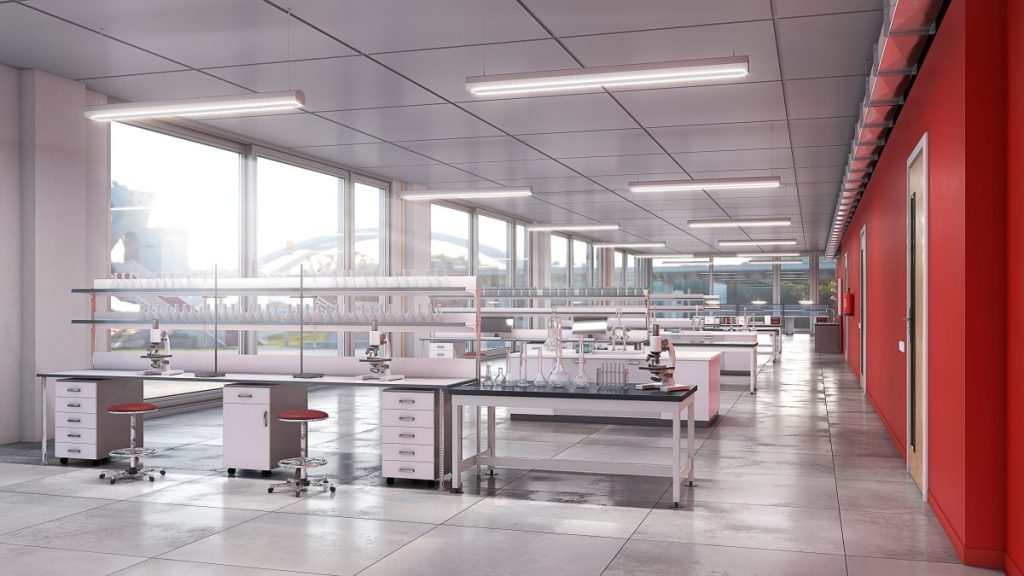
How can we incorporate flexibility in the lab?
Flexibility and conversion can easily be achieved by being strategic in the design process.
By incorporating flexibility to the design, you will be able to test your theories in the wet lab and analyze the data in the same converted dry lab.
Most components in dry labs are moveable, and wet labs can be designed with flexible workstations, which allows you to convert the lab from wet to dry and back.
Some elements such as fume cabinets and sinks are not easily moveable, but overall, it is possible to design a flexible lab that can easily convert.
In some cases, it is a good idea to design a flex-zone that works both as office space and lab. In that way there is space for inventory moving around as well as having the extra space if you want to expand your lab.
Need help with your next lab project?
Whether you are converting office space into labs, are expanding your existing lab, or you are building from scratch, we can help you with your lab areas.
We not only specialize in lab design but also act as the main contractor, taking care of the whole build project from beginning to end.
We would love to hear about your project and help make your lab project a reality.
Once filling out our contact form we will be in touch within 24 hours to learn about your project.

